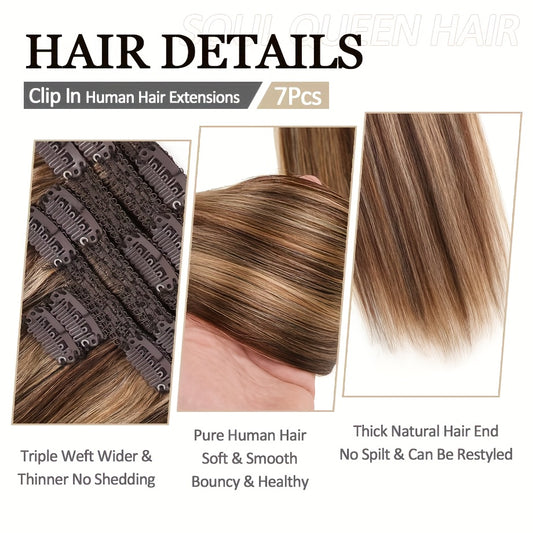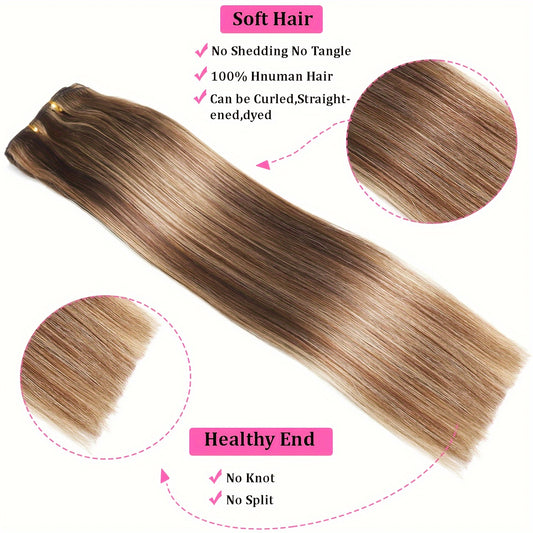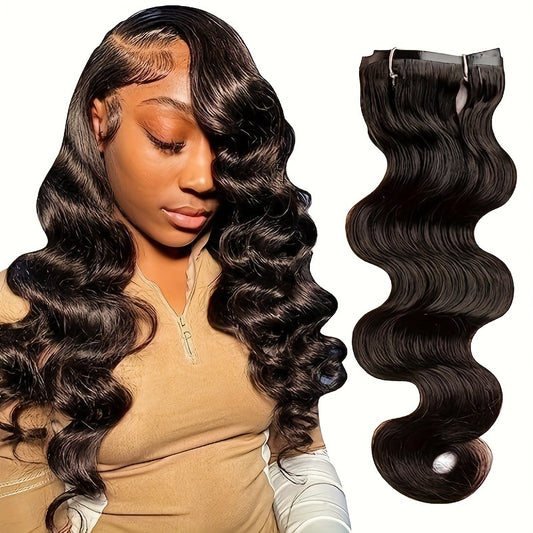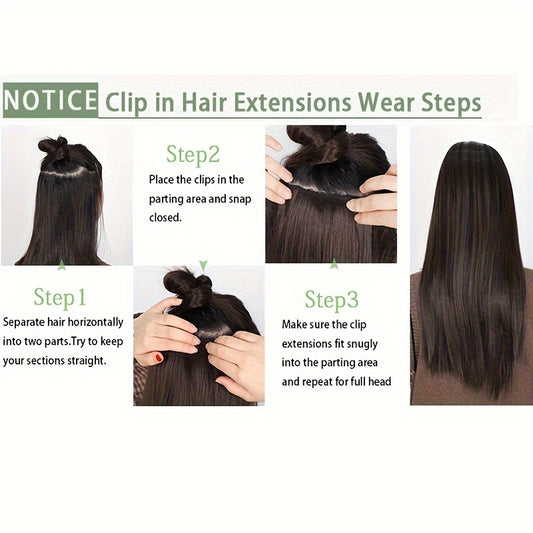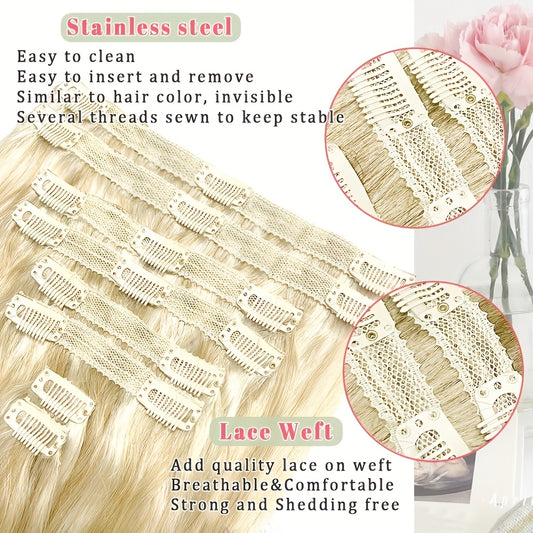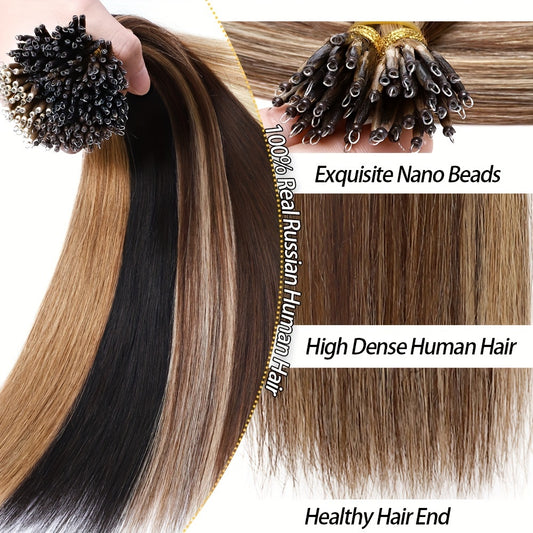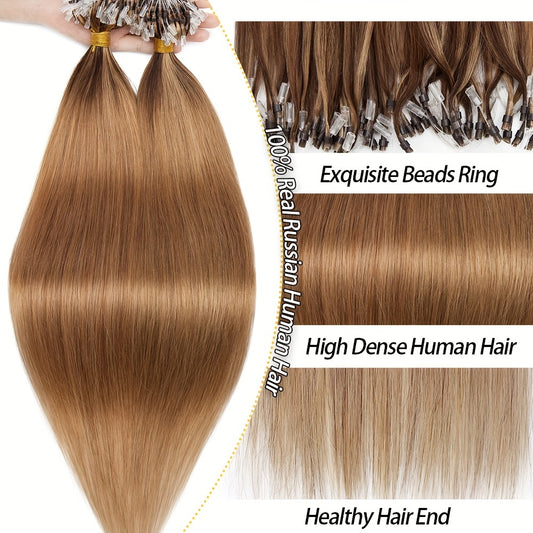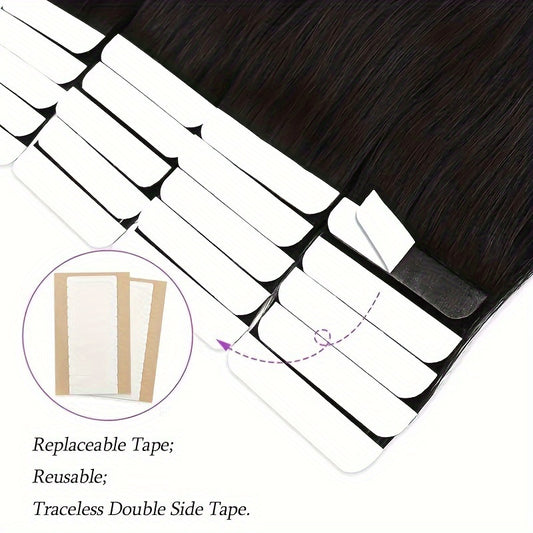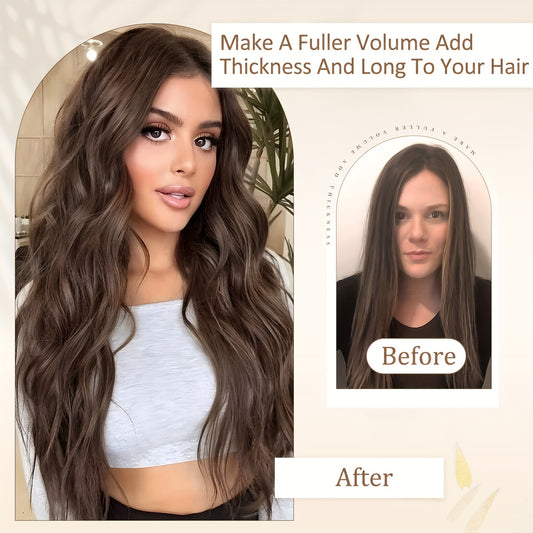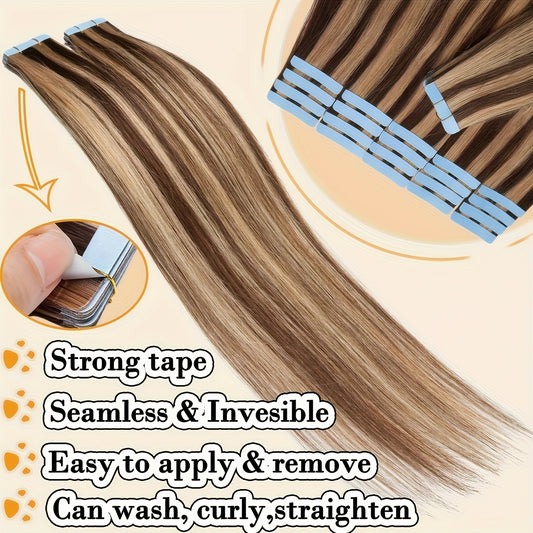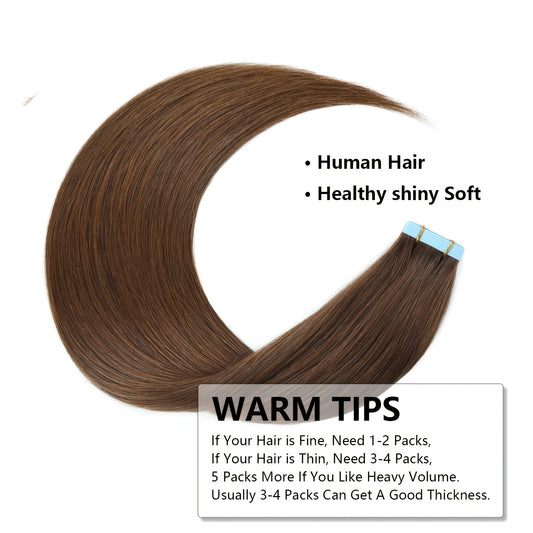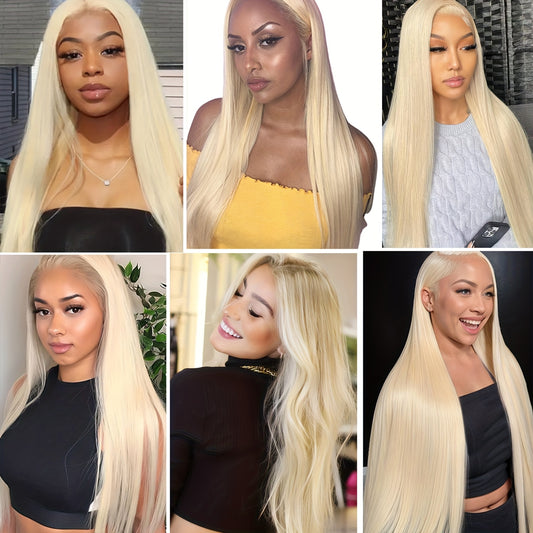About 24 Inch Human Hair Weft Weave Extensions
Length on real heads
A true 24 inch straight finish typically reaches the waist or just above. Soft waves make it appear closer to 22 inches; defined curls can read near 20 to 21 visually. This is not a fault in the hair; it is a normal effect of pattern and shrinkage. Because outerwear, straps, and chair backs contact the hair frequently at this size, expect to brush once after removing layers and place a tiny drop of serum only on mid lengths and ends to control static. Keep roots clean so anchors grip and rows do not slip. The crown layer—your top hair that hides rows—is your concealment budget; protect it.
Cameras judge the hem. Wispy ends make a long length look underbuilt. A plush hem looks deliberate. That difference comes from grams, draw, and a small micro trim rather than heavy products. Selection is the lever; styling simply expresses the choice you already made.
Why choose a weft based system
A weft distributes hair along a track so the outline looks continuous and dense. Traditional sew in rows on braids spread weight and stand up to long days. Beaded row methods create a low bulk foundation for hand tied or flat wefts and make move ups fast. Compared with daily clip ins, a 24 inch weave installation stays on the head for weeks and removes time spent installing each morning. It also allows precise mixing of shades and textures across rows for a custom match. If you want a set it and live in it approach with consistent photography, a weft is efficient.
Clip ins still have their place for occasional length or highly sensitive scalps, but at extra long lengths many people prefer the stability and silhouette control of rows. With correct tension and spacing a row feels secure, sits flat, and keeps the hem compact and camera ready.
Weft constructions overview
Machine weft has a durable, slightly thicker seam that can be cut to size. It carries high density per row and holds up well on the nape where friction is highest. The tradeoff is more bulk; keep the crown layer generous above machine weft rows. Hand tied weft has a very thin seam tied by hand. It lays flat and feels light, ideal for upper rows and for fine hair, but it should not be cut through the seam; fold or select panel widths to fit. Flat or genius weft is a hybrid: slim like hand tied, cuttable like machine weft. It solves two problems—bulk and sizing—and is highly practical for 24 inch builds that navigate curves and temples.
Double weft means two layers stacked for extra density per row. It creates a plush bottom line if your natural hair is dense or blunt. Some stylists place a machine or flat double weft at the nape and lighter, thinner rows above for comfort. Matching construction to zone is a simple way to keep weight low while the hem remains strong.
Remy material standards
Remy hair keeps cuticles aligned in one direction. This lowers friction, reduces matting, and maintains a natural, soft sheen instead of harsh glare. True Remy tolerates moderate heat reliably: one slow pass to smooth, curls that hold after full cooling, and wash cycles that do not roughen the surface. Heavy silicone films can make any fiber look perfect on day one yet wash off unevenly; the result is dullness and drag. Prefer minimal processing and clear statements about toning tolerance so you can adjust cooler or slightly deeper without lifting.
At 24 inches, cuticle integrity is not marketing; it is the reason the hem stays believable month after month. A clean end profile is a materials story more than a styling story.
Where 24 inches lands and measuring
Measure from behind the ear down to the point on your waist or lower ribs where you want the ends to sit in a straight finish. Subtract one to two inches if you plan to wear soft waves most days; subtract more for coils. Try the measure with a blazer or a dress you wear often so you can evaluate proportion. Long hair should frame the garment, not fight it. If you film content, verify the length on camera at seated height because chairs lift the hair relative to the frame. Practical checks avoid surprises.
Grams planning by goal
Grams control end authority and row feel. A simple ladder avoids guesswork. Around ninety to one hundred twenty grams delivers subtle fullness and improved ends for fine, layered hair worn mostly in waves. One hundred thirty to one hundred sixty grams suits an everyday full head that photographs dense without feeling heavy, especially when rows are distributed well. One hundred seventy to two hundred thirty grams builds a plush hem for blunt cuts, thicker strands, studio lighting, or humid climates. Above two hundred thirty grams addresses very dense natural hair or razor straight looks under hard light. Choose grams for the photo you want. A graphic straight edge requires more mass than a romantic wave sheet.
Distribute grams by zone rather than stacking near the crown. Use a durable machine or flat weft at the nape for friction resistance and hand tied or flat wefts higher for comfort. If you see hollows near the temples in photos, dedicate two very narrow panels to that area instead of adding yet another back row. Smart placement outperforms raw weight.
Draw and end behavior
Single drawn wefts taper at the tips like natural growth. They brush into motion easily and read soft. Double drawn wefts hold thickness deeper into the lower third and read like a fresh cut: square, decisive, and polished in straight or beveled styles. At 24 inches double drawn often photographs as more expensive because the hem occupies more frame space. If only single drawn is available, a micro trim of half an inch to one inch turns a soft taper into a firm line without sacrificing the idea of extra long length. This trim is the highest impact, lowest cost visual upgrade for long lengths.
Whatever the draw, proof beats promises. Demand a cropped back view of ends at rest in daylight. It tells the truth about density far faster than adjectives.
Install methods explained
Traditional sew in on braids uses flat, narrow cornrows as anchor paths; the stylist sews the wefts to the braids with curved needles and thread. Pros: strong hold, predictable wear, handles high density, and protects much of the natural hair. Cons: tension management on fine scalps is critical and drying the braided base fully after washing takes time. Beaded row methods attach a foundation with small silicone lined beads and then stitch hand tied or flat wefts to that base. Pros: flat lay, light feel, and quick move ups. Cons: precision is required; beads must be closed cleanly and spaced to avoid pinching. Braidless sew in combines beads and thread with machine or flat wefts; it is flexible and sturdy when tension is gentle and even.
Hybrids are common. One heavy row at the nape, one medium row around the occipital curve, and a light row below the crown balances silhouette and comfort. The uppermost row should sit where the crown layer remains thick enough to conceal seams during wind and turns. Installing rows too high is the most common exposure mistake at 24 inches.
Sectioning and row placement
Row spacing is typically a finger to an inch apart depending on head size and hair density. Keep sections clean and consistent so rows track parallel to the hairline. When turning corners, fold flat or genius wefts rather than cutting if possible; seal any cut edges lightly to minimize shedding. Machine wefts curve less easily than hand tied or flat wefts and are best used on flatter sections like the nape or low occipital. Always keep a generous crown layer; think of it as a concealment budget that you do not want to overspend.
Temples need a plan. Narrow, slightly angled panels placed just behind the hairline remove hollows that appear at three quarter angles. Dedicated temple panels often matter more for realism than adding density to the back. Proportion beats raw volume.
Tension and comfort
Comfort is a non negotiable requirement. Rows should feel snug and secure but never painful. Headaches, hot spots, or pinching indicate too much tension or a bead that traps a single hair. Distribute weight across many anchors rather than a few. At move up appointments shift anchor points a few millimeters to protect follicles. On sensitive scalps, reduce grams per row and add an extra row; lower per anchor load solves more problems than tighter beads ever will.
Daily habits preserve comfort. Brush supporting the row with the free hand, start detangling from the ends upward, and avoid heavy oils near anchors. Do not sleep on wet rows; dry the base thoroughly. A silk pillowcase or bonnet reduces friction all night. Small, consistent choices make the system feel forgettable in the best way.
Leave out versus closure
Leave out means your own hair covers the top row. It is the most natural in wind and in close photos because the part and hairline are real. The tradeoff is daily heat on the leave out. A closure replaces the part area with lace and lowers the heat burden on your hair but requires lace care and blending skill. A frontal covers ear to ear and can reset the hairline for dramatic looks at the cost of more maintenance. For a simple, long wearing 24 inch plan, a well protected leave out with low daily heat is often the quiet winner.
If your leave out is fragile, consider a closure during recovery. Lower heat on the rest of the head supports that recovery without sacrificing the long silhouette you want.
Texture selection and scale
Straight shows length clearly and demands disciplined brushing. Body wave is the universal blender; it accepts a single low heat smoothing pass or expands into plush curves with modest heat. Loose curl and deep wave deliver defined patterns; match coil diameter to your own hair scale to make the join vanish when styled. Coily wefts should be labeled by diameter and shrinkage ratio rather than vague names; provide proof photos of defined and brushed out states so buyers and stylists can predict behavior.
At 24 inches body wave often reads premium because it lifts the hem slightly and needs fewer hot passes to hold a shape. Straight reads dramatic and sharp but exposes friction faster. Coily looks thrive when scale matching is precise and moisture routines are steady.
Color logic and undertone
Match by undertone first—cool, neutral, warm—then by depth. Verify in daylight near a window; bathroom bulbs skew results. If you sit between two options, choose slightly lighter because Remy weft hair extensions accept cool or deeper toners, while lifting lighter can raise cuticles and shorten life. Rooted and balayage wefts hide seams along parts and temples and handle darker roots gracefully. When mixing bundles, a slightly deeper lowlight row under a lighter row adds dimension without extra styling.
Edge cases are familiar. Neutral cool brunettes that read warm indoors should trust daylight and, if needed, apply a short cool glaze. Warm brondes that swing by environment benefit from rooted gradients. Deep browns with red cast start neutral and tone cooler in small steps rather than buying pre warm stock. For gray blending, choose neutral gray and tune with violet only if yellow appears under certain bulbs.
Heat and finish control
Keep tools at or under one hundred eighty Celsius or three hundred fifty Fahrenheit. One slow pass on a straightener polishes better than several quick ones. For waves, use a one and a quarter inch iron, allow full cooling, then brush into one pattern. Mist flexible spray onto the brush, not directly on hair, to preserve natural sheen. Finish with a pea of serum on mid lengths and ends only. Bevel the very ends on straight days to create a crisp, fresh cut impression.
Cooling is the golden rule. Heat reshapes internal bonds, but shape sets while cooling. Brushing hot erases the work and invites more heat, which shortens life. Cooling costs nothing and returns weeks of longevity.
Wash cadence and move ups
Wash rows once or twice per week depending on scalp and product load. Rinse thoroughly, shampoo the scalp, let suds slide through lengths, condition from mid lengths to ends, rinse cool, blot with microfiber, and air dry as far as possible before finishing with low heat. Dry between rows carefully to prevent moisture pockets. Move ups typically occur every six to eight weeks; shift anchors slightly and inspect seams. A seasonal micro trim of half an inch preserves edge authority for the camera and costs less than adding grams that you may not need.
Clip in weft bundles used occasionally should be washed every ten to fifteen wears. Store brushed pieces coiled in a gentle U in a satin pouch away from heat and humidity. Do not sleep in clip in pieces.
Shedding control and handling
Machine wefts can be cut but should be sealed at the cut edge to control shedding. Hand tied wefts should not be cut through the seam; fold at corners or buy panel widths that fit your map. Flat or genius wefts are designed to be cut but still benefit from a light seal at the trimmed edge. When sewing, place needle passes near but not through the seam to preserve strength. Avoid over stacking near the crown; let the crown layer cover with ease.
Shedding increases with heavy oils at the seam, excessive heat, or brushing that pulls on the row rather than supporting it. Support the row with your free hand and work from ends upward. Light, repeatable handling multiplies lifespan.
Sleep, workouts, and travel
Before sleep, brush gently and place hair in a loose braid or two. Use a silk pillowcase or bonnet. Do not sleep with wet rows. For workouts, a low braid and a soft headband limit tugging; allow sweat to dry before brushing. If your routine includes helmets or headsets, map rows lower and keep temple panels narrow to prevent pressure points. For flights, store clip in pieces brushed in a satin pouch; for sew in rows, smooth a micro drop of serum on ends and refresh with a light leave in after landing.
A small kit—loop brush, teasing comb, flexible spray, light serum, spare clips or beads if relevant, curved needles and thread for trained stylists—handles nearly everything without heavy products. Tools beat product volume.
Troubleshooting quick list
Row visible in wind or at bright angles: the top layer is too thin or the row is too high; move the row lower at the next refresh, shift the part slightly, or use a slim cover weft higher. Ends read wispy in straight photos: micro trim half an inch to one inch or order double drawn next time. Nape tangles under coats: reduce heat for a week, hydrate ends, and brush after removing outerwear. Tension discomfort: reduce grams per row, add a row to spread load, and vary bead placement at move ups.
Color looks right outdoors but off indoors: trust daylight and, if needed, cool tone briefly. Temple hollows: install a dedicated narrow panel trimmed on a gentle diagonal. Drying time too long: separate sections with fingers while blow drying the base, then finish lengths at low heat. Small moves fix most issues.
Event workflow
Set waves early and allow full cooling while you complete makeup and dressing. Brush into one pattern and sweep once with flexible spray on the brush. Bevel ends if wearing straight. Pack a five minute refresh kit with a loop brush, flexible spray, serum, and two spare clips. For outdoor events, plan an ear tuck for transitions and a small part shift in case of wind. These micro plans keep extra long hair tidy in candid shots as well as posed frames.
For weddings and shoots, schedule a mid event reset for the last photos. A calm brush, a pass of the brush sprayed with flexible hold, and a finger polish through the ends revive the hem without adding stiffness.
Page content that reduces returns
The collection page should say the length and method clearly in the title and show each shade in daylight from front, side, and back with a cropped end shot at rest. A single sentence under the hero should tell buyers where 24 inches falls on the body and the typical install time. Filters must include grams, construction type, texture, and shade families. Each product tile should list grams and texture plus a small use cue like everyday density, blunt cut ready, or studio hem.
A how to apply diagram labeled section, anchor, blend keeps instructions tight. An FAQ answers heat caps, wash cadence, return basics for unopened hair, and an undertone reminder. A short color assist note near swatches prompts daylight checks. Every element is a decision aid rather than a story paragraph.
Accessibility and localization
Pair poetic shade names with numeric descriptors like level 6 neutral brown so color blind buyers can map choices. Provide alt text that includes length, texture, undertone, and draw. Ensure filter controls are keyboard accessible and that changes are announced to screen readers. Include inches and centimeters for length and keep grams consistent. Show each shade on at least two complexions and include a strand on white to neutralize background bias.
Publish realistic shipping windows and customs notes. Provide support hours across time zones. Clarity here improves satisfaction more than any slogan can.
Sustainability and value
Durable materials and small habits extend life. A well kept 24 inch Remy weft set can last months. When amortized across many wears, cost compares favorably to repeating single appointment services. Offering spare beads, thread, and clip replacements encourages repair over replacement. Minimal, recyclable packaging that still protects wefts reduces waste. Clear, honest education prevents mismatches and returns. Fewer returns mean less material usage and more stable prices.
Value hides in predictability. When your map, grams, and routine repeat, the result looks premium without high effort. That is the practical luxury of a well planned weave.
Glossary
Weft: a horizontal track of hair sewn or tied together. Machine weft: durable seam, cuttable, higher bulk. Hand tied weft: ultra thin seam tied by hand; do not cut through. Flat or genius weft: slim seam that can be cut; lays flat like hand tied. Draw: distribution of lengths and end fullness—single tapers, double stays thick. Bundle: measured hair pack by grams. Beaded row: foundation created with small beads for stitching wefts. Sew in: method of stitching wefts to braids or a beaded base.
Leave out: natural hair left to cover top rows. Closure: lace piece that replaces the part. Frontal: ear to ear lace replacing hairline. Move up: appointment to reposition rows as hair grows. Perimeter: the visible edge at the ends. Cover weft: narrow piece placed higher to hide a join. Occipital: the back curve of the head where many rows sit.
Summary
A 24 inch human hair weft weave provides a dramatic, camera ready length that stays manageable when grams, draw, and placement are chosen with care. Match construction to zone—sturdy at the nape, slim near the crown. Choose grams for the photo you want, not the number that sounds impressive. Confirm color by undertone in daylight and consider rooted or balayage for darker roots. Keep tools moderate, cool before brushing, and schedule regular move ups. Protect comfort with even tension and smart distribution. The outcome is a long silhouette that behaves predictably through work, travel, and events without heavy routines.
The rules are small and repeatable. Section cleanly, sew or bead lightly, distribute weight, cool entirely, brush once, store in satin. Extra long hair rewards calm consistency far more than loud products.
Customer reviews
- The grams chart guided me to two bundles plus a narrow temple panel, and my 24 inch hem now looks decisive instead of see through; waves hold if I let them cool first. — Madison Clark, New York, USA ⭐⭐⭐⭐⭐
- I matched color by undertone in daylight and picked a rooted neutral; my part blends outside and under office lights with no filter tricks. — Daniel Moore, Toronto, Canada ⭐⭐⭐⭐⭐
- Sensitive scalp and still comfortable thanks to a beaded row with flat wefts; spacing and light tension made move up week easy. — Ava Wilson, London, United Kingdom ⭐⭐⭐⭐
- Machine weft on the nape with hand tied higher was the right mix; it lays flat under headphones and the 24 inch length looks clean on video. — Sophie Turner, Sydney, Australia ⭐⭐⭐⭐⭐
- Two tiny temple pieces fixed the hollow near my cheekbones; a half inch micro trim made the perimeter read like a fresh cut. — Emma Schmidt, Berlin, Germany ⭐⭐⭐⭐⭐
- Shipping ran a day long so one star off, but the Remy quality is obvious and the seams are tidy; the six week move up was quick. — Harper Davis, Chicago, USA ⭐⭐⭐⭐
- I run webinars and the long outline photographs smooth—no plastic glare, just a steady edge that stays neat under soft boxes. — Grace Martin, Los Angeles, USA ⭐⭐⭐⭐⭐
- Went with body wave because I switch between blowouts and plush curls; the beaded row map from this guide made install straightforward. — Amelia Wright, Manchester, United Kingdom ⭐⭐⭐⭐⭐
- First professional weave for me and the grams advice matched my blunt cut; two and a quarter bundles plus a temple panel did the trick. — Olivia Dubois, Montreal, Canada ⭐⭐⭐⭐⭐
- I braid for sleep and brush in the morning; far fewer tangles than I feared at this length and the hem stays sharp after one sweep. — Charlotte Evans, Melbourne, Australia ⭐⭐⭐⭐⭐


